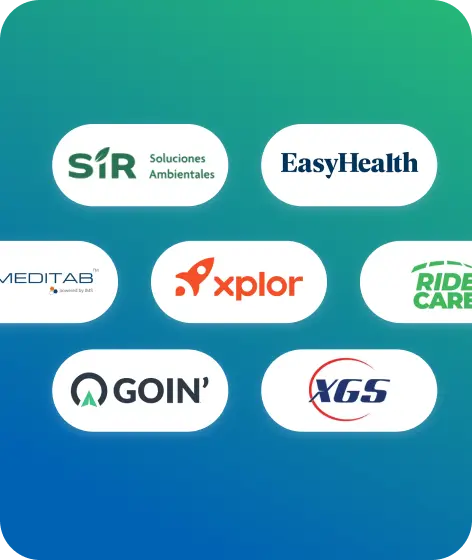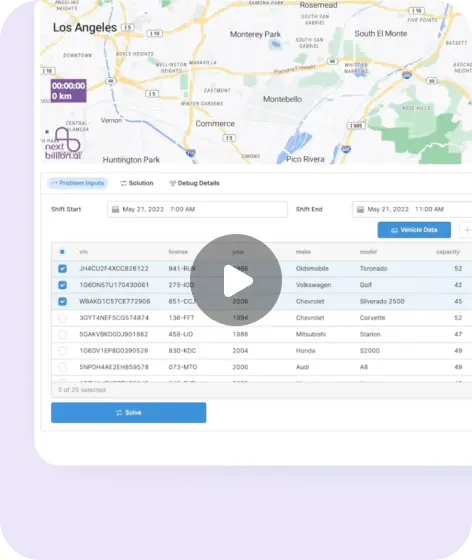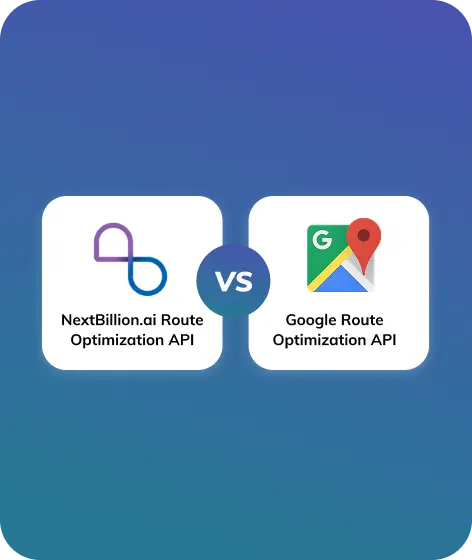
Table of Contents
APIs (Application Programming Interfaces) are fundamentally transforming delivery logistics by enabling seamless integration, automation, and real-time data exchange across the supply chain. Acting as digital intermediaries, APIs allow logistics platforms, e-commerce systems, and transportation networks to communicate in real time, breaking down traditionally siloed operations and creating integrated, intelligent ecosystems. This transformation is being accelerated not only by traditional API connectivity but also by the rise of AI-enhanced APIs, which are reshaping how logistics companies operate, collaborate, and compete in an increasingly complex and fast-paced environment.
What are APIs?
APIs (Application Programming Interfaces) are sets of rules and protocols that allow different software applications to communicate with each other.
Concept | Explanation |
Interface | A defined way for software to interact—APIs specify how requests should be made. |
Request | When one system asks another to do something (e.g., “get the weather”). |
Response | The information sent back (e.g., “Today’s temperature is 24°C”). |
Endpoint | A specific URL where the API service is available (e.g., /weather/today). |
Data Format | APIs commonly use JSON or XML to format data. |
An example of how API works in Logistics:
You run an e-commerce website and want customers to track their orders.
Steps:
- Customer clicks “Track My Order” on your website.
Your system sends a request to the logistics provider’s Tracking API like this:
GET https://api.logisticsco.com/track?order_id=12345
- The logistics API responds with:
{
“status”: “Out for delivery”,
“estimated_delivery”: “2025-06-01”
}
- Your website displays:
“Your package is out for delivery. Estimated delivery: June 1, 2025.”
Result: Your system didn’t have to store or manage shipment data—it just asked the logistics API and showed the answer.
How APIs Revolutionize Delivery Logistics

The following are the ways how APIs revolutionize delivery logistics:
1. Real-Time Visibility & Tracking
APIs enable end-to-end shipment monitoring by integrating GPS data from vehicles, warehouse management systems, and IoT sensors. This creates live tracking dashboards that update location data every 30-60 seconds, reducing customer inquiries by 40% according to industry reports. Advanced implementations combine weather APIs and traffic data to predict delays before they occur.
2. Dynamic Route Optimization
Modern routing APIs analyze multiple variables in real time:
- Live traffic patterns
- Vehicle capacity constraints
- Driver hours-of-service regulations
- Fuel consumption rates
This enables dynamic rerouting that reduces empty miles by up to 25% compared to static routes.
3. Automated Order Fulfillment
API-driven systems connect e-commerce platforms directly to:
- Warehouse inventory databases
- Carrier rate calculators
- Customs clearance systems
This automation cuts order processing time from hours to seconds while reducing errors by 92%.
4. Intelligent Capacity Management
APIs enable predictive load balancing by analyzing:
- Historical shipping patterns
- Real-time demand signals
- Carrier availability
Logistics providers using these systems report 15-30% better asset utilization.
5. Unified Partner Ecosystems
APIs standardize data exchange between:
- 3PL providers
- Customs brokers
- Payment gateways
- Insurance platforms
This interoperability reduces document processing costs by 60% and speeds clearance times by 40%.
6. Automated Order Processing
By connecting e-commerce platforms, warehouse management systems, and shipping carriers, APIs automate order processing and fulfillment. This drastically reduces manual input, minimizes errors, and accelerates processing times
- Enhanced Inventory Management
APIs connect warehouse systems with suppliers and retailers, enabling real-time stock updates. This prevents inventory shortages or overstocking and supports automated reordering processes for improved supply chain efficiency. - Seamless Carrier Communication and Rate Comparison
Logistics companies can use APIs to connect with multiple shipping carriers, compare rates, transit times, and services, and select the best option for each shipment in real time. - Improved Customer Experience
API-driven platforms provide customers with real-time notifications, estimated delivery times, and tracking links, resulting in higher satisfaction and brand loyalty. - Cost Reduction and Efficiency Gains
Automating logistics processes through API integration eliminates paperwork, reduces labor costs, and streamlines operations. Companies report up to 27% productivity increases and 23% reductions in operational costs after adopting API-connected transport management systems (TMS)
Examples of API Applications in Logistics
The following are few examples of API applications in Logistics:
- Mapping & Routing APIs: These APIs are used in route optimization and real-time tracking. Example – Google Maps API
- Carrier Integration: These APIs are used in shipment tracking and order processing. Example – FedEx API, UPS API, DHL API
- E-commerce Integration: These APIs are used in order fulfillment and inventory sync. Example – Amazon SP-API
- Enterprise Integration: These APIs are used in ERP-logistics sync and data exchange. Example – SAP Logistics API
The Rise of AI-Enhanced APIs
AI-driven APIs are further elevating logistics by enabling predictive and proactive management:
- Predictive Disruption Management
AI-enhanced APIs analyze vast amounts of real-time and historical data to predict disruptions (e.g., weather delays, traffic jams) and recommend or implement solutions before issues escalate. - Self-Learning and Adaptability
These APIs can automatically integrate with new partners and systems, learning their data patterns and operational requirements without manual reprogramming. This agility supports rapid scaling and adaptation to changing logistics needs. - Orchestrating Interconnected Ecosystems
AI-driven APIs facilitate real-time collaboration between suppliers, manufacturers, warehouses, and transport companies. They coordinate complex workflows, reroute shipments, adjust inventory, and keep all stakeholders informed automatically. - Self-Optimizing Logistics Systems
AI-enhanced APIs continuously monitor and improve logistics operations, autonomously adjusting routes, schedules, and inventory levels based on live data inputs. This results in ongoing efficiency gains and cost savings
Key Ways APIs Are Transforming Real-Time Shipment Tracking
- Centralized, Automated Tracking Across Carriers
APIs aggregate shipment data from multiple carriers and sources into a single system, eliminating the need for manual checks on individual carrier websites or spreadsheets. This centralization provides logistics teams with a unified, real-time view of all shipments, regardless of carrier or mode of transport. For example, container tracking APIs can connect to over 180 shipping lines, offering live updates on location, status, and events for every container. - Real-Time Data and Proactive Alerts
With APIs, shipment status updates are pushed automatically to logistics platforms and customer-facing systems. This enables real-time monitoring of shipments, with instant alerts for delays, customs holds, or other exceptions. Automated notifications keep both internal teams and customers informed, allowing for immediate response to disruptions and improved customer satisfaction. - Enhanced Visibility for All Stakeholders
APIs provide transparency throughout the shipping process by making shipment data accessible to shippers, freight forwarders, logistics managers, and end customers. This visibility includes live tracking, estimated delivery times, and event histories, enabling better planning and reducing the risk of missed delivery windows. - Improved Decision-Making and Efficiency
Access to real-time tracking data via APIs allows logistics providers to make informed, agile decisions—such as rerouting shipments in response to traffic or weather disruptions, or reallocating resources to optimize delivery performance. Automated workflows reduce manual data entry and errors, streamlining operations and cutting costs.
Seamless Integration and Scalability
APIs enable easy integration between logistics platforms, warehouse management systems, carrier networks, and customer interfaces. This interoperability supports business growth by allowing new partners and services to be added with minimal friction, and by scaling operations without increasing manual workload.
Practical Impact and Use Cases
- Shipping Companies: Monitor fleet locations in real time for timely deliveries and performance optimization.
- Freight Forwarders: Streamline operations and improve customer service with automated status updates and exception alerts.
- E-commerce Platforms: Provide branded tracking experiences and proactive delivery notifications to end customers, boosting satisfaction and reducing support inquiries.
- Logistics Managers: Optimize route planning and resource allocation based on live shipment data, reducing idle time and costs.
Key Ways APIs are Optimizing Routing and Scheduling for Faster Deliveries
APIs are dramatically optimizing routing and scheduling in logistics, enabling faster deliveries through automation, real-time intelligence, and seamless system integration.
- Real-Time Adjustability
APIs enable logistics platforms to instantly adapt delivery routes based on live traffic, weather, and road conditions. This real-time adaptability allows companies to reroute drivers dynamically, minimizing delays and ensuring on-time deliveries even when unexpected disruptions occur. - Efficient Multi-Stop Routing
Route optimization APIs calculate the most efficient sequence for multiple delivery stops, taking into account factors like distance, traffic, delivery windows, and vehicle capacity. This ensures drivers follow the shortest or fastest possible routes, reducing travel time and increasing the number of deliveries completed per shift. - Automated, Scalable Scheduling
APIs automate the generation of optimized delivery schedules, factoring in constraints such as driver working hours, vehicle load limits, and customer-specific time windows. This reduces dispatcher workload and eliminates manual planning, enabling logistics teams to efficiently manage thousands of orders and vehicles—even during peak periods. - Seamless System Integration
Plug-and-play APIs integrate easily with existing logistics, warehouse, and order management systems. This allows businesses to quickly deploy advanced routing and scheduling capabilities without overhauling their IT infrastructure, accelerating time-to-value and supporting business growth. - Enhanced Customer Experience
With API-driven routing, customers receive accurate ETAs and real-time delivery updates. Transparent tracking and reliable scheduling improve customer satisfaction and loyalty, which is critical in competitive sectors like e-commerce and food delivery. - Custom Constraints and Flexibility
Modern APIs allow for the customization of routing logic based on unique business needs—such as avoiding toll roads, meeting strict delivery windows, or accommodating special vehicle requirements. This flexibility ensures operational efficiency across diverse logistics scenarios.
NextBillion.ai's API-Driven Logistics Solutions
NextBillion.ai enhances delivery operations through specialized APIs that address critical industry challenges:
Advanced Route Optimization Engine
NextBillion.ai’s Route Optimization API sample:
Sample API call for multi-stop routing
import nextbillion as nb
api = nb.RouteOptimization(api_key=“YOUR_KEY”)
response = api.optimize_route(
stops=[
{“lat”: 1.3521, “lng”: 103.8198, “type”: “depot”},
{“lat”: 1.3043, “lng”: 103.8318, “type”: “pickup”},
{“lat”: 1.2804, “lng”: 103.8500, “type”: “delivery”}
],
vehicle={“type”: “refrigerated_truck”, “capacity”: 1500kg},
constraints={“time_windows”: True, “traffic”: “live”}
)
Key features:
- Mixed Fleet Support: Handles 2-wheelers to 16-ton trucks with custom road restrictions
- Reverse Logistics: Optimizes return pickups alongside deliveries, reducing empty runs by 35%
- Scalable Matrix API: Processes 10,000+ origin-destination pairs in <2 seconds
For more information on how to optimize, refer NextBillion.ai’s Route Optimization APIs.
Predictive Last-Mile Delivery
NextBillion.ai APIs, SDKs and tools that work together to form NextBillion.ai’s last-mile delivery solution.
The building blocks of the Last Mile Delivery includes:
Refer Distance Matrix APIs for more information on APIs.
Refer Geofencing API for more information on APIs.
Customizable Constraints Engine
json
{
“route_rules”: {
“avoid”: [“toll_roads”, “ferries”],
“preferred”: [“electric_vehicle_stations”],
“time_windows”: {
“deliveries”: “09:00-17:00”,
“pickups”: “flexible”
}
}
}
This JSON configuration enables granular control over routing logic.
Unified Visibility Platform
NextBillion’s API-first architecture aggregates data from:
- Telematics devices
- Warehouse robots
- Driver mobile apps
Providing a single dashboard with: - Live vehicle locations
- Container temperature monitoring
- Document status tracking
Implementation Impact
Companies using NextBillion’s APIs report:
- 18-27% reduction in fuel costs
- 31% faster invoice processing
- 45% improvement in customer satisfaction scores
- 60% reduction in manual dispatching work
The integration of advanced APIs into logistics operations represents a fundamental shift from reactive to predictive supply chain management. Solutions like NextBillion.ai demonstrate how API-driven architectures enable real-time decision making at scale, turning delivery logistics into a strategic competitive advantage rather than a cost center. As these technologies mature, we’re approaching an era where 95%+ of logistics decisions will be API-mediated within the next decade.
How NextBillion.ai Lowers Delivery Costs
- Smarter Route Optimization:
NextBillion.ai’s Route Optimization API uses advanced algorithms that factor in real-world constraints such as live traffic, vehicle types, and regulatory restrictions to generate the most efficient multi-stop routes. This reduces unnecessary mileage, lowers fuel consumption, and minimizes driver hours, directly cutting operational costs. - Accurate Distance and Time Estimates:
The platform’s high-speed Distance Matrix API calculates precise travel times and distances for thousands of stops in seconds, enabling strategic batch planning and efficient resource allocation. This accuracy helps avoid costly delays and reduces the cost per delivery.
- Custom Geospatial Data Integration:
Businesses can incorporate their own proprietary map data (e.g., private roads, facility layouts, custom POIs), ensuring that routing decisions align perfectly with operational realities. This reduces detours and failed deliveries, saving both time and money. - Scalable and Predictable Pricing:
NextBillion.ai offers flexible pricing models, including fixed monthly fees or pay-per-order/vehicle options, helping businesses control costs even as delivery volumes fluctuate. - Automated Dispatch and Asset Utilization:
AI-powered dispatching ensures optimal assignment of orders to vehicles based on capacity, location, and delivery windows, increasing asset utilization and reducing idle time.
How NextBillion.ai Boosts Delivery Speed
- Real-Time Dynamic Routing:
The APIs continuously adjust routes based on live traffic and changing delivery conditions, ensuring drivers always follow the fastest path available. This dynamic optimization leads to up to 30% faster delivery times for some businesses. - Granular Map Data for Last Mile:
NextBillion.ai’s detailed mapping capabilities include apartment complexes, entry/exit gates, parking spots, and correct side-of-street information. This granularity helps drivers reach precise drop-off points quickly, reducing delivery time and improving customer satisfaction. - High-Volume, Low-Latency Processing:
The platform’s APIs can process large-scale routing problems of thousands of stops and vehicles in seconds, supporting rapid decision-making and enabling businesses to scale operations without bottlenecks. - Industry-Specific Optimizations:
Whether for e-commerce, food delivery, field services, or trucking, NextBillion.ai tailors its routing logic to the unique needs of each sector, maximizing speed and reliability across diverse delivery scenarios. - Actionable Insights and Predictive Analytics:
By leveraging machine learning and historical data, NextBillion.ai predicts delivery times and identifies potential bottlenecks, allowing proactive adjustments that keep deliveries on schedule.
Conclusion
APIs are revolutionizing delivery logistics by enabling real-time data exchange, automating manual processes, and seamlessly connecting disparate systems across the supply chain, resulting in dramatic gains in efficiency, cost savings, and customer satisfaction. Through API integration, logistics providers can automate order processing, optimize delivery routes, enhance inventory management, and provide customers with live tracking and proactive notifications transforming traditional, fragmented workflows into agile, transparent, and highly responsive operations. In this rapidly evolving landscape, NextBillion.ai stands out as an API-first, location technology platform that empowers enterprises to tackle complex delivery challenges with advanced route optimization, dynamic mapping, and flexible integration options. Leveraging a modular suite of APIs and AI-driven algorithms, NextBillion.ai enables businesses to generate multi-stop delivery routes under real-world constraints, automate reverse logistics, customize map data, and integrate seamlessly with existing ERP and fleet management systems, all while supporting large-scale, real-time operations. This comprehensive approach not only reduces last-mile delivery costs and improves vehicle utilization, but also ensures scalable, future-proof logistics solutions that keep pace with the demands of modern commerce.
About Author
Prabhavathi Madhusudan
Prabhavathi is a technical writer based in India. She has diverse experience in documentation, spanning more than 10 years with the ability to transform complex concepts into clear, concise, and user-friendly documentation.








